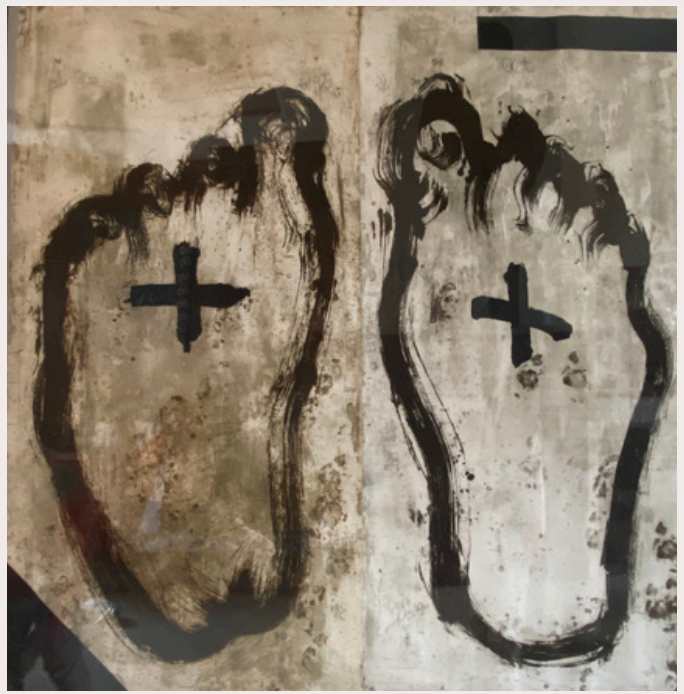Antoni Tàpies (1923–2012) was a Spanish-Catalan painter, sculptor, and art theorist, widely regarded as one of the most influential European artists of the 20th century. His work is known for its textured surfaces, abstract symbolism, and deep philosophical undertones.
Early Life & Influences
Tàpies was born in Barcelona, Spain, and grew up during the Spanish Civil War, which deeply influenced his artistic and political views. Initially studying law, he abandoned it to pursue art, drawing inspiration from Surrealism, especially the works of Joan Miró and Paul Klee. Later, he became associated with Art Informel, a European movement that emphasized expressive abstraction.
Artistic Style & Themes
Tàpies’ art is characterized by:
- Materiality: He used unconventional materials like sand, marble dust, and found objects in his paintings, giving them a rough, almost sculptural texture.
- Symbols & Calligraphy: His works often feature crosses, letters, numbers, feet, and everyday objects, creating a personal visual language.
- Spirituality & Mysticism: Influenced by Zen Buddhism and existentialist philosophy, his art often explored themes of transcendence, imperfection, and the passage of time.
- Political Statements: Living under Franco’s dictatorship in Spain, his works sometimes contained subtle resistance symbols, reflecting themes of oppression and human suffering.
Major Works & Recognition
Some of his most famous works include:
- Gran pintura gris (1955)
- Blau amb quatre barres roges (1984)
- Materia sobre tela (1960)
He exhibited internationally, receiving prestigious awards such as the Golden Lion at the Venice Biennale (1993) and the Velázquez Prize (2003).
Legacy
Tàpies’ influence continues through the Fundació Antoni Tàpies in Barcelona, which preserves and promotes his work. His impact on contemporary abstract art remains profound, bridging the gap between traditional painting and conceptual art.


